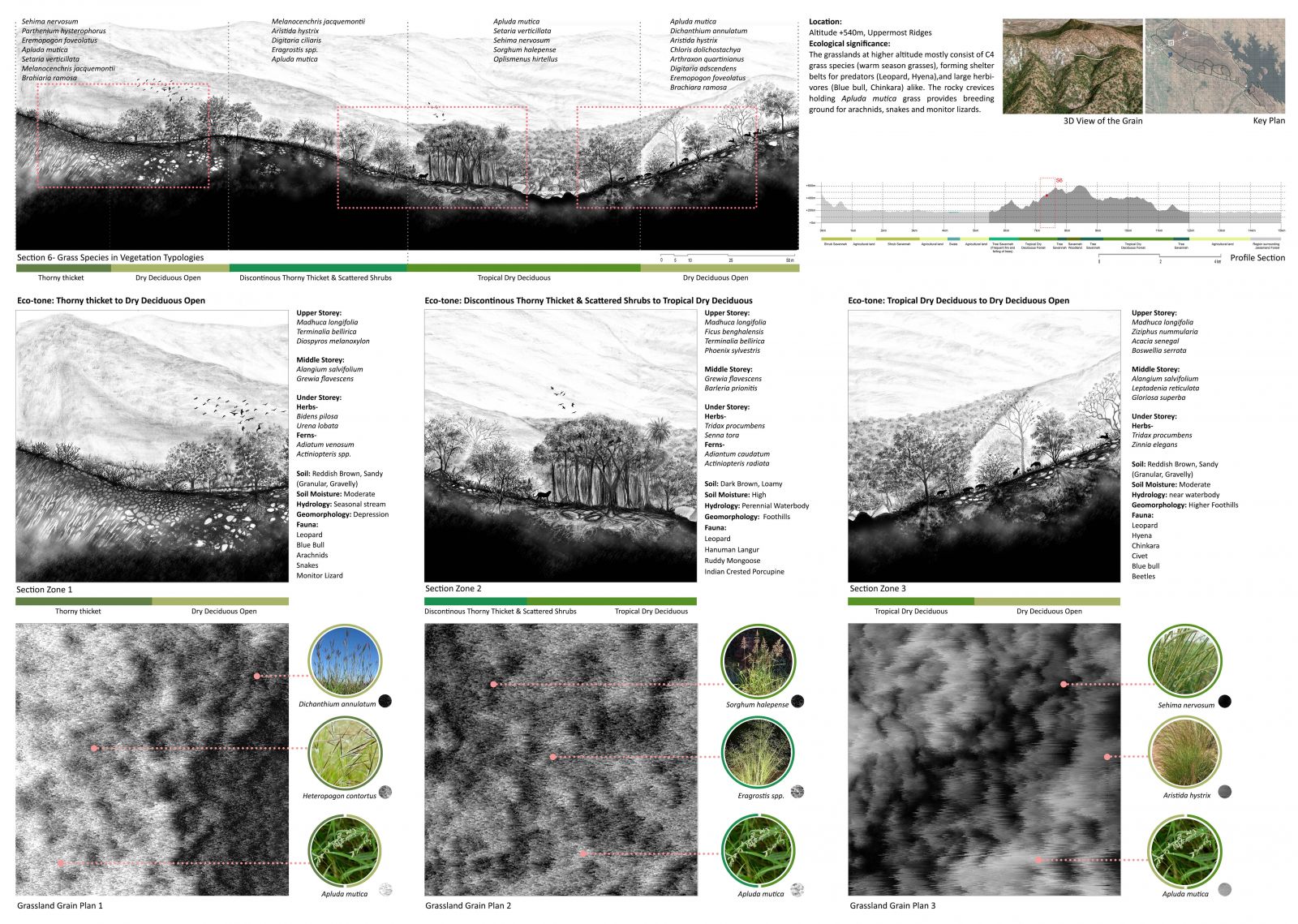- Student NAGOTANEKAR SHRADDHA SANJAY SHEETAL
- Code PLA22329
- Faculty Architecture
- Tutor/s Yati Sengupta,Priyal Shah,Divya Shah
Layers of laterally interwoven grasslands act as binders of the earth. This mainly consists of herbs, ferns and grasses (Actors). It is the result of the interactions between the soil type, topography, vegetation dynamics and climate. Grasslands have their own ecological significance; smaller grasses are used by Chinkaras, the intermediate ones by large herbivores while the taller ones are preferred for resting, nesting, hiding and breeding. The forest is explored through this interwoven mat of grassland spread all across the forest; holding the forests together, forming gaps of different scales and sizes; creating varied nature of these gaps. What are these gaps? Are they forming other typologies, transitionary movement paths or reposes for the biotic interactions? What happens to these gaps during the seasonal shifts? What takes over in these emergent voids during summers? The study aims to decode what are these voids of grasslands in Tropical Dry Deciduous Forest.









